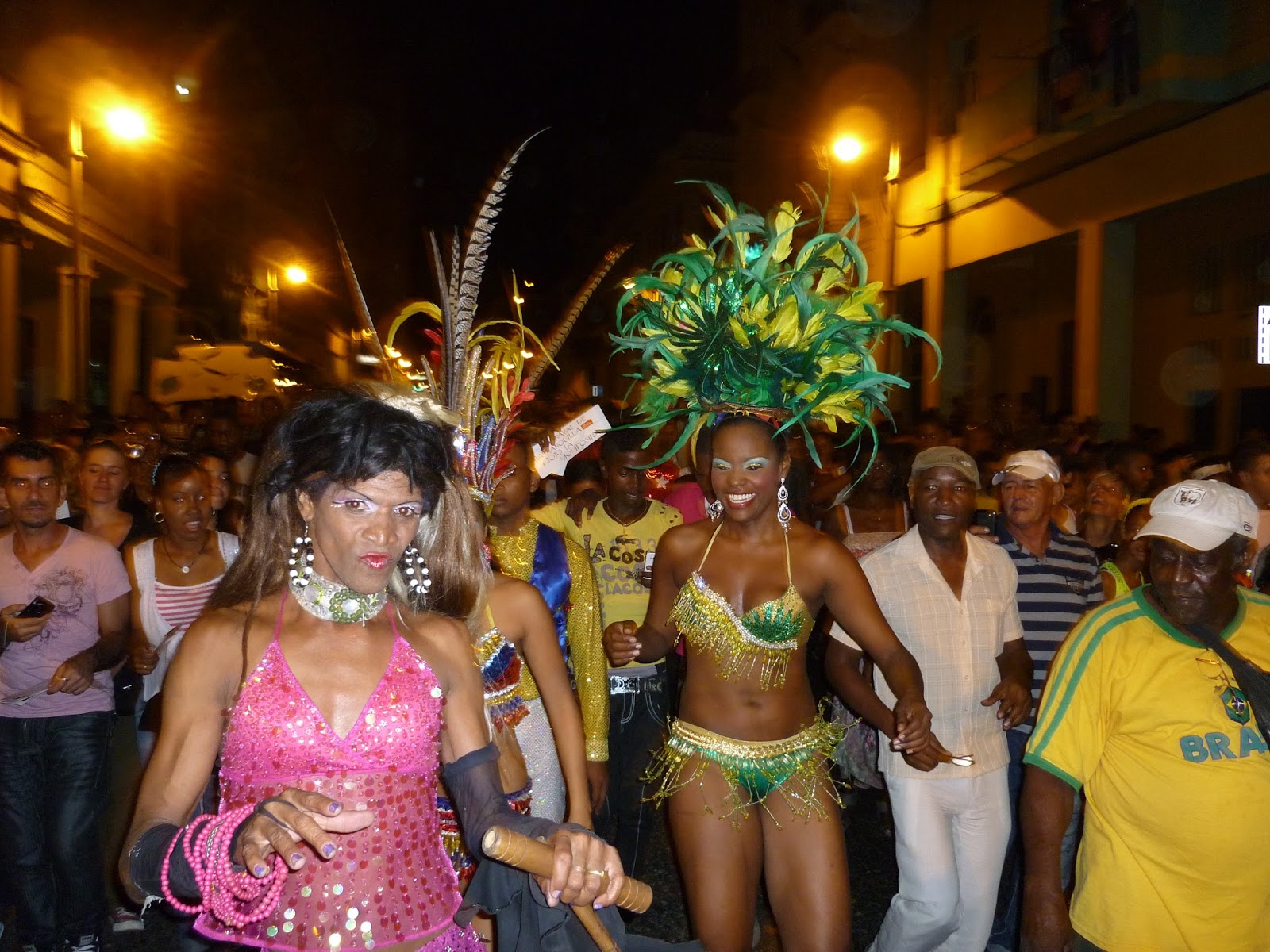Afrocolombian spirit gliding over La Habana, could be a good summary of this unique night, beginning in the Teatro de America, and ending in the streets as an improvised carnaval...
On their way back from Santiago de Cuba (where Fire Festival 2013 had Colombia as special guest), colombian artists including a Baranquilla folkloric group and Toto la Momposina were booked for a concert to share afrocolombian culture, carnaval music and dance. The venue was one of La Habana numerous theaters, Teatro de America, which was open in 1941 (Avenida de Italia, locally know as Galiano) and still transmits the majestic atmosphere from this golden era.
The show consisted in alternating the folkloric band with Toto songs, so more a performance promoting cultural richness of Colombia than a classic concert. Top level dancers performing cumbia, danza de congo (war dance with impressive costume, played with drum, guacharaca, hand palms and voices), danza de garabato (dance simulating waves, which rhythm can be "pajarito", "chandé" or "golpe alegre"), comparsa de fantasia (typical parade, reminding one original fonction of Carnaval : a disguised caricature of colonial bourgeoisie).
Best moments were probably the impressive mapale dance, some great drums and gaita solos, and Toto amazing solo voice who touched the entire audience. My appreciation would be much more nuanced on the "El Pescador" cover, which in my view was more influenced by cheesy 80s sounds than authentic afrocolombian soul. I'm sure sax and guitar players cannot believe this is faithful way to play this track, and I'm afraid the culture promotion would not benefit from this kind of compromise with authenticity (although allowing Toto to travel the world and get a wider audience).
A particular tribute was paid to Paulino Salgado (Batata), as major afrocolombian artist, and also because he contributed in promoting the sexteto format. The sexteto configuration originally comes from Cuba, but has been transmitted by cuban migrants (from the 20s) and became common in Palenque region although mixed with local musical specificities. This gave opportunity to Toto to play a cuban guaracha in a colombian style.
At the end, it was a great show proposing many aspects of afrocolombian culture which Baranquilla carnaval represents a key element. Cuba and Colombia have love for music in common, but also sense of party, and the concert ended in a situation hardly conceivable in Europe : at the last track, the folkloric band continued playing down the stage, then went out of the venue still playing and followed by the audience, and an improvised Carnaval parade invaded the street, stopping the traffic, walking down to the Malecon. Popular music and dance finally return to the street, a definitely more natural environment than an official theater...
Check this muzzicaltrips post about Carnaval in Santiago de Cuba HERE.





